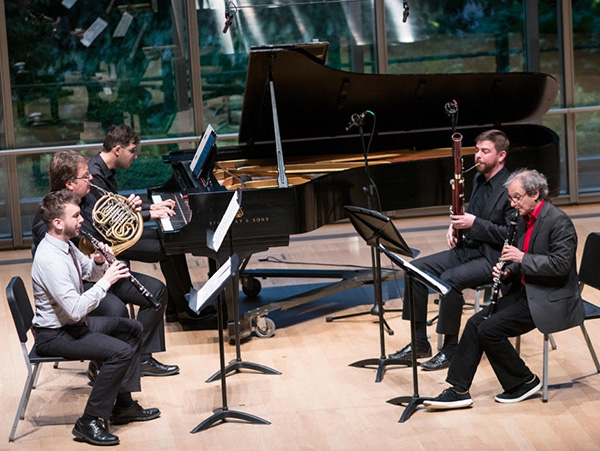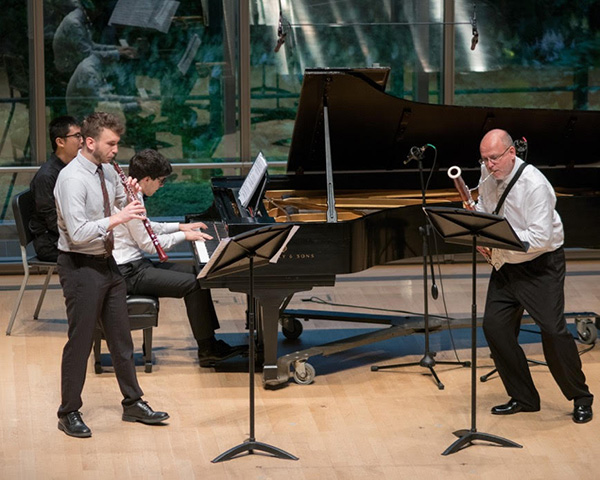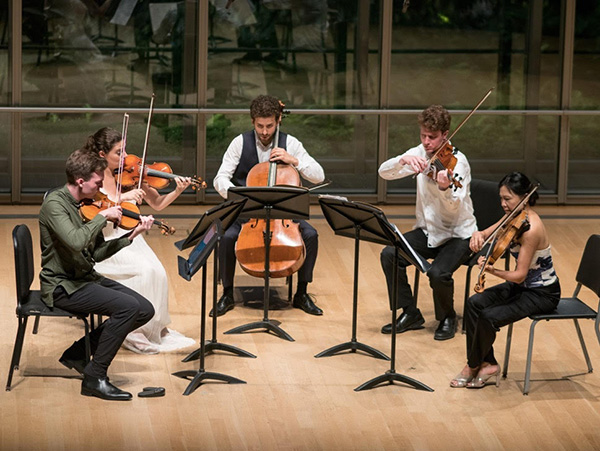by Daniel Hathaway

Beethoven’s Piano and Wind Quintet is modeled on the quintet in the same key that Mozart had written a dozen years earlier. In our litigious era, lawyers would be pouncing, but for Beethoven, that amounted to the sincerest of flattery.
Pianist Roman Rabinovich completely inhabited the persona of a young Beethoven eager to prove his mettle in an elaborate keyboard part that surrounds his fellow wind players in fantastical filigree. Oboist Liam Boisset, clarinetist Franklin Cohen, bassoonist Matthew McDonald, and hornist William Caballero held Rabinovich in a close musical embrace, producing perfect unisons and shaping stylishly tapered phrases. Their blend was extraordinary.
Boisset returned with bassoonist Fernando Traba and pianist Evren Ozel for a spirited performance of Poulenc’s piquant Trio, inspired by the wit and humor of Mozart, the composer Poulenc said he preferred to all others. Dazzling tempos and tricky transitions were child’s play in the hands of the three musicians, and Ozel’s coverage of the keyboard was thrilling to behold.
Mozart himself closed out the oversold concert in a glowing performance of The Giant’s K. 593 String Quintet by violinists Alexi Kenney and Diana Cohen, violists Hsin-Yun Huang and Tanner Menees, and cellist Nicholas Canellakis.
The first movement begins with a cello solo answered by the upper strings. It would be fun to wrap that gesture into a story that might explain some other musical details — like the three-note motive that ends many phrases, and the odd repetition of the slow opening toward the end. An emotionally ambiguous adagio and a nearly fugal minuet with curious pauses lead to a finale with arresting chromatic passage work.
The piece is striking, and playing with great unanimity and style, the ChamberFest performers made clear virtues out of its oddities. Mozart wrote the piece the year before he left the earth. It makes one wonder in what direction he might have taken his music had he lived past the age of 35.
Published on ClevelandClassical.com June 25, 2019.
Click here for a printable copy of this article





